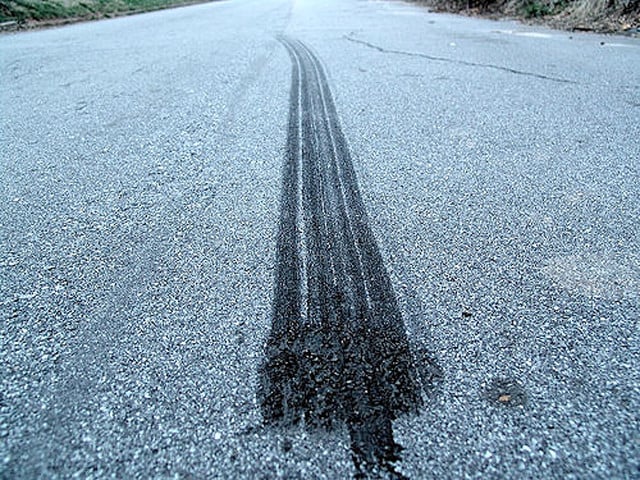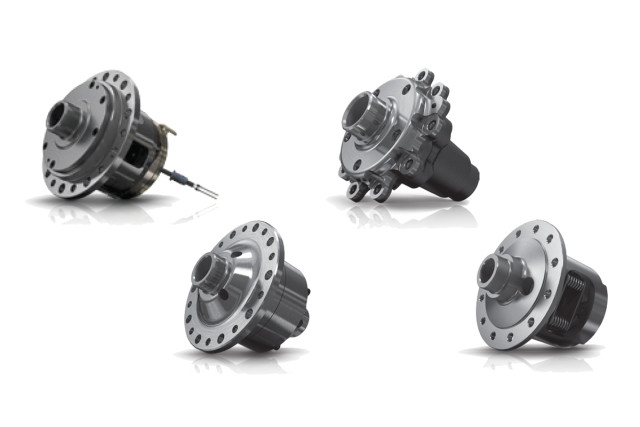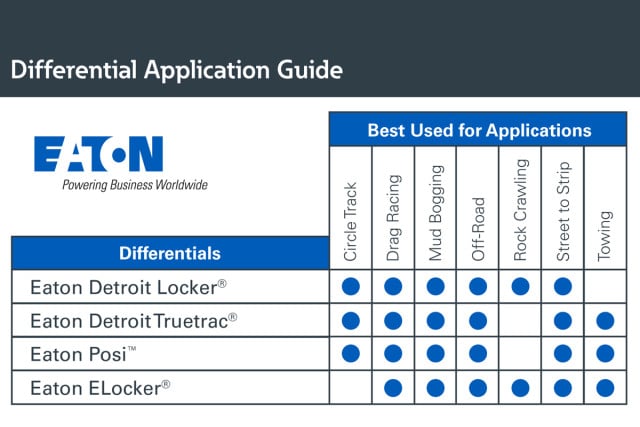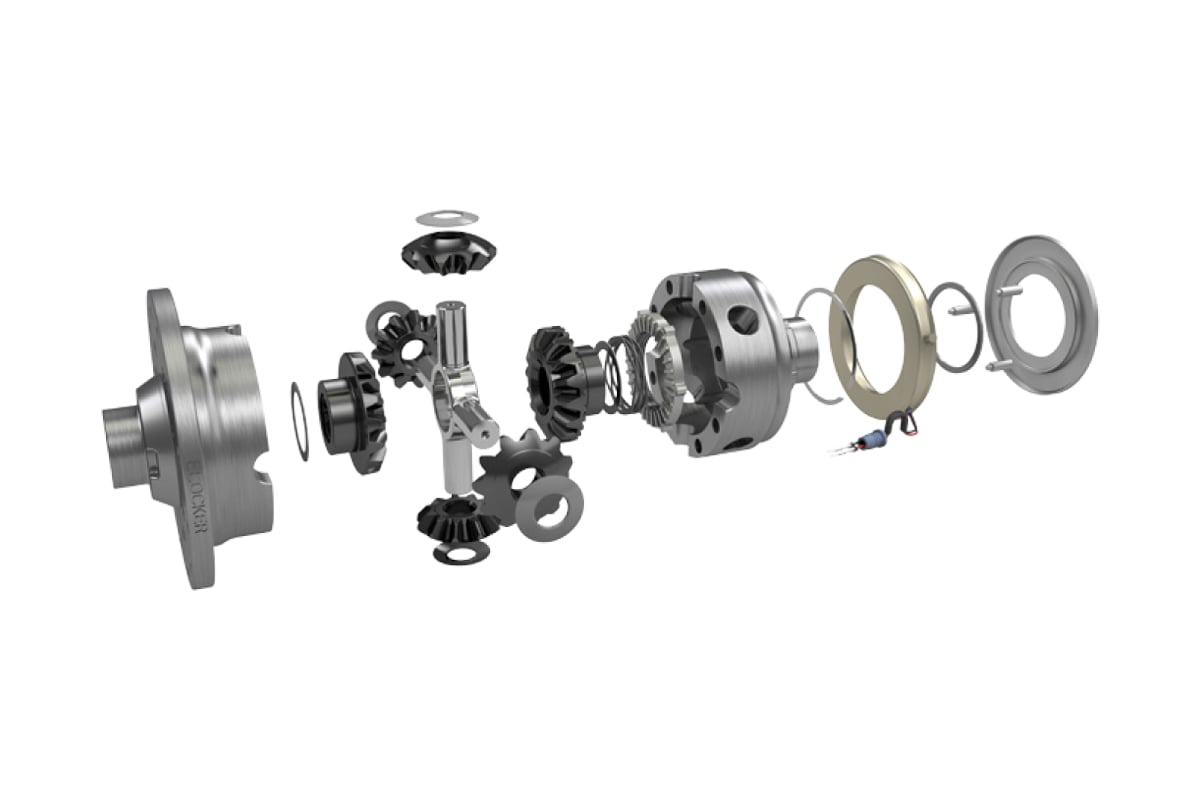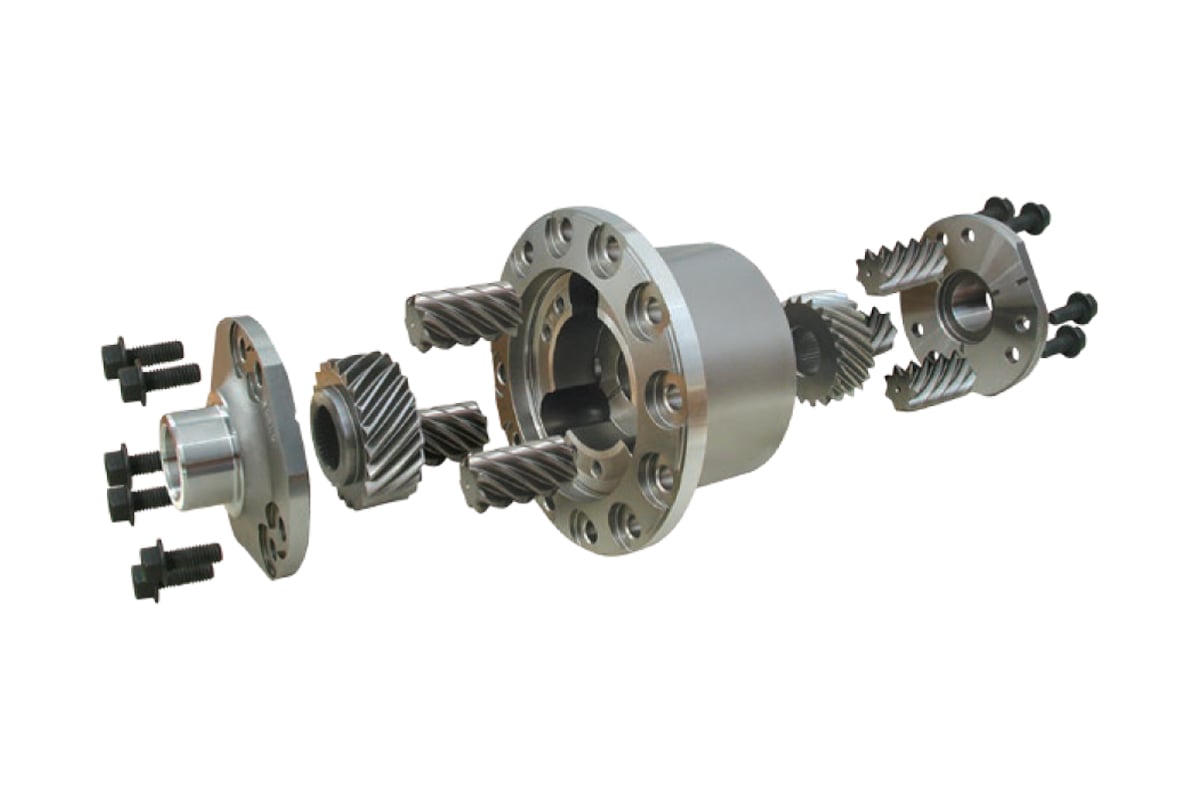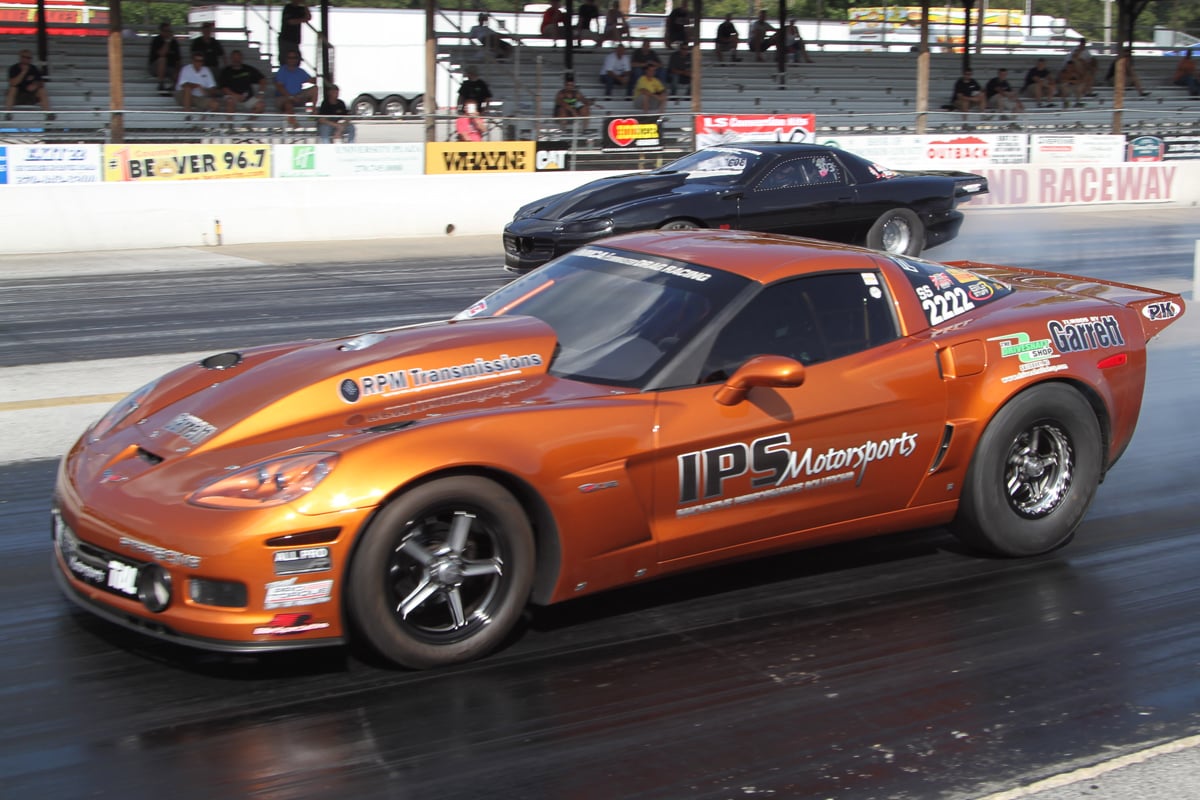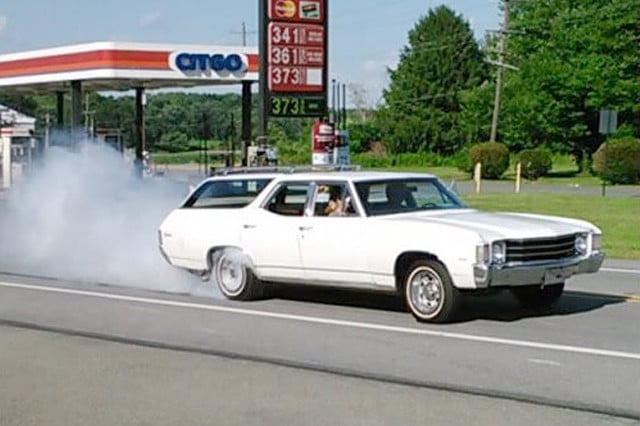 For those who got that hand-me-down grocery-getter for your first car, you probably noticed the first time you tried to spin your tires that only one tire spun. The other tire didn’t seem to do anything more than to support the opposite side of the car. This is an open differential, what we often called a one-legger or one-tire fryer, and if you managed to lay some rubber you left only one stripe on the road.
For those who got that hand-me-down grocery-getter for your first car, you probably noticed the first time you tried to spin your tires that only one tire spun. The other tire didn’t seem to do anything more than to support the opposite side of the car. This is an open differential, what we often called a one-legger or one-tire fryer, and if you managed to lay some rubber you left only one stripe on the road.
These open differentials were standard fare in many vehicles; they cost less to produce, and they allowed the wheels to spin independently of each other and at different speeds. With only one wheel transferring the power to the pavement, the wheel that spun got all of the power while the other got absolutely nothing from the differential.
The limited slip differential is one way to get that lost traction to the wheel that had the most grip. So instead of all the power going to the wheel that slips, much of that power is transferred through the differential to get power to the other wheel. The locking differential will provide power to both wheels.
We’re going to look at four Eaton differentials and provide information about each to help you decide which is the best for your application. To say that one is better than the others is inaccurate, because each of these serve a specific purpose and your choice depends on how you use your vehicle.
Locking Vs. Limited Slip
A locking differential will do just that: it locks the gears so that torque is provided to both drive wheels. While this is great for a drag strip, it’s not exactly the best for road racing or street driving where you’re constantly making turns. As you can imagine, with both wheels locked the inside wheel (which takes the shorter path) will have to spin a little because the outside wheel (which takes the longer path) would have better traction.
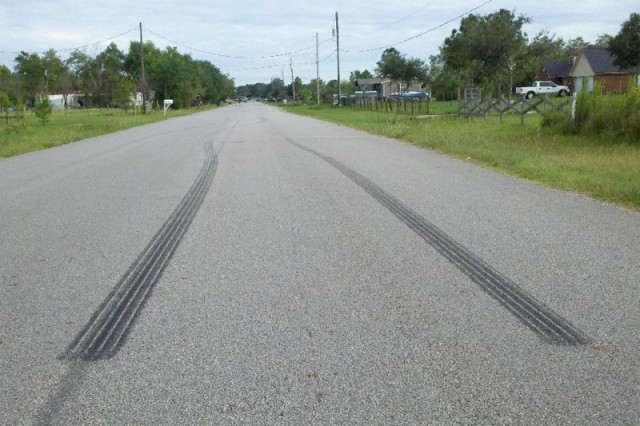
Painting 11s: with a locking or limited slip differential – and enough power – this is the result when you do a burnout: two, equal-length marks left on the road.
Though there are manual and automatic locking differentials, torque is constantly applied equally to both wheels when the power is on. This inhibits some tire wear because even though torque is transferred to the wheel with grip, the wheel with slip is still going to do some spinning. An automatic locking differential can unlock and allow the inside wheel to rotate freely, but only when power is limited.
The limited slip differential will allow some slipping between the two side gears, this allows both wheels to get equal traction even though one is spinning faster than the other. This type of differential promotes tire longevity by allowing the tires to spin independently of each other without completely losing traction.
Because the power is transferred from the wheel that spins to the wheel that grips, you don’t typically spin one tire. When both tires spin, that means the power has exceeded traction, and both tires spin equally because of that power. An underpowered car would simply get traction and accelerate.
It is possible to leave unequal-length patches on the pavement with a limited slip, because at the point where traction begins to happen, one tire will typically begin to see traction before the other. This is because the limited slip differential will transfer power to the wheel that grips, and also because the tires are spinning at a high rate of speed when traction is achieved. The four differential types below from Eaton will help you get the power to the ground, but as you can see from the chart below, the choice is not based on what or where you drive.
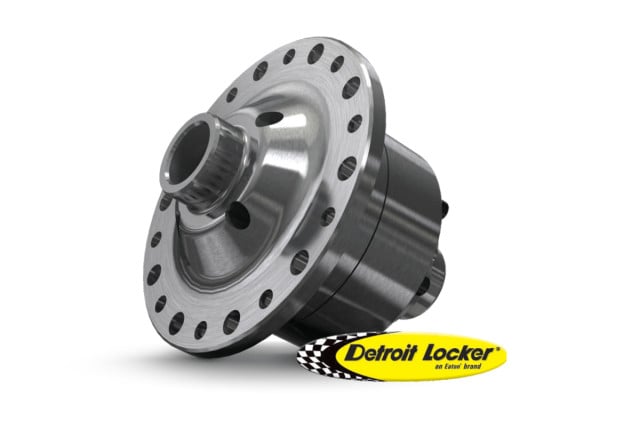 The Detroit Locker will provide maximum traction because both drive wheels receive 100 percent of the torque. It’s designed for a variety of uses, and its automatic operation will allow the unit to unlock during cornering when there is little to no power applied. Because the locking is speed sensitive, when cornering under power with a Detroit Locker you can expect some tire spinning from the inside wheel. At lower speeds, once the cornering is done, the differential automatically locks again.
The Detroit Locker will provide maximum traction because both drive wheels receive 100 percent of the torque. It’s designed for a variety of uses, and its automatic operation will allow the unit to unlock during cornering when there is little to no power applied. Because the locking is speed sensitive, when cornering under power with a Detroit Locker you can expect some tire spinning from the inside wheel. At lower speeds, once the cornering is done, the differential automatically locks again.
The locking and unlocking is done automatically, and if you’re a performance junkie with lots of power, the Detroit Locker is one differential that can handle it. It’s a great differential for the drag strip, and at the end of the track it’s a little kinder to your tires because of the automatic unlocking of the differential. Back onto the throttle, and the Detroit Locker is back to full lock mode, providing 100 percent torque to both wheels. Many road racers do like the aggressiveness of the Detroit Locker, and because it will unlock when detecting wheel speed differences while cornering.
Eaton ELocker
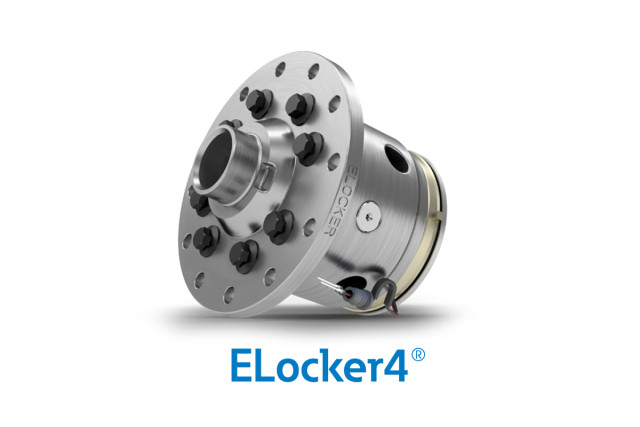 The Eaton ELocker is an electronic locking differential that operates much like the open differential, but when a switch is activated it becomes a locked differential. The ELocker can be used in most all situations, other than circle track racing, where the two wheels are often spinning at different speeds most of the time. Because the switching is done electronically, when the the ELocker is switched off the differential acts as a fully-open differential.
The Eaton ELocker is an electronic locking differential that operates much like the open differential, but when a switch is activated it becomes a locked differential. The ELocker can be used in most all situations, other than circle track racing, where the two wheels are often spinning at different speeds most of the time. Because the switching is done electronically, when the the ELocker is switched off the differential acts as a fully-open differential.
Once activated, both axles are 100 percent locked and both wheels will share the same revolutions, so there will be slipping on the inside tire. This unit is best used for off-roading or rock crawling, and while it can be used in high performance applications, it’s not considered a road race or daily driver type of differential because it’s not designed for constant switching on and off. The ELocker lets you stay in control, and requires no lube additives.
Detroit Truetrac
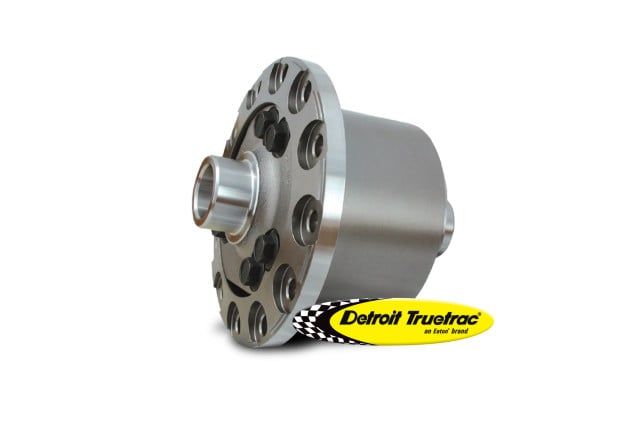 The Detroit Truetrac is going to be an excellent all-around differential that can handle the power you supply with your street car, and still manage to give you great driveability. The Truetrac will provide a near lock state when the power is applied, but it performs as an open differential until traction is needed.
The Detroit Truetrac is going to be an excellent all-around differential that can handle the power you supply with your street car, and still manage to give you great driveability. The Truetrac will provide a near lock state when the power is applied, but it performs as an open differential until traction is needed.
The Truetrac doesn’t use the typical clutch or spring type of mechanicals to provide that near locking state. Instead, a set of helical gears rely on torsion to provide the torque to the wheel with the most traction. When one wheel is starting to slip, the gear separation forces automatically supply torque from the wheel that’s slipping to the wheel that’s gripping. This makes for a great all-around differential because there are no wearing parts, and it is completely maintenance free.
Keep good gear lube in the rearend, and you should be able to use this differential for a lifetime. Because it relies on torsion, friction modifiers and synthetic gear lube are highly discouraged, as they could prohibit the differentials ability to function properly. Because of the operation of the Truetrac, it can help improve handling cars that see spirited driving or road racing/autocross.
Eaton Posi
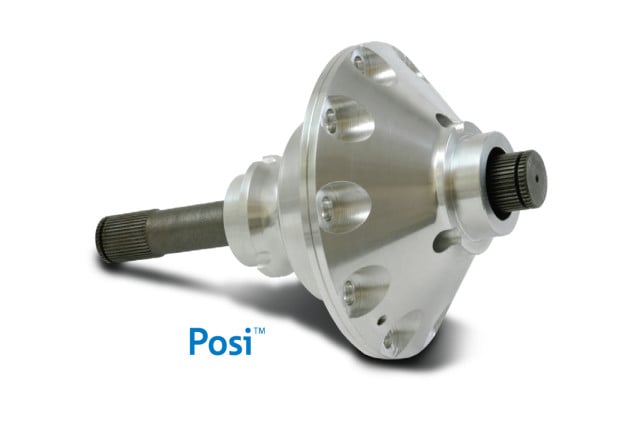 Eaton was the original developer of the posi-traction differential, and today it is still used in many GM vehicles, most notably the Corvette. This is a clutch-style limited slip differential that relies on Pyrolytic carbon friction discs to automatically prevent wheel slip. This is a completely rebuildable differential, with the ability to change internal spring rates to tune the differential for specific applications.
Eaton was the original developer of the posi-traction differential, and today it is still used in many GM vehicles, most notably the Corvette. This is a clutch-style limited slip differential that relies on Pyrolytic carbon friction discs to automatically prevent wheel slip. This is a completely rebuildable differential, with the ability to change internal spring rates to tune the differential for specific applications.
Higher spring rates will provide a stronger locking function, with lower rates allowing more slip. Because this is a limited slip differential, it will allow one wheel to slip while the other grips, meaning that when cornering you won’t have full lock on both wheels. This helps prolong tire life, but it is still a great differential for drag racing where traction is of utmost importance. Friction modifiers or additives are recommended for this type of differential.
Left: The ELocker internals. Right: The Truetrac internals. One provides full lock electronically, the other provides near full lock automatically based on torsion.
Which Differential Do You Choose?
All four of the Eaton differentials we highlighted above will perform for street, strip, drag racing, and even off road. So there isn’t really any way to tell you that one will be better for you based on what vehicle you own. Rather, choosing one of these differentials will be based on how and where you drive most often.
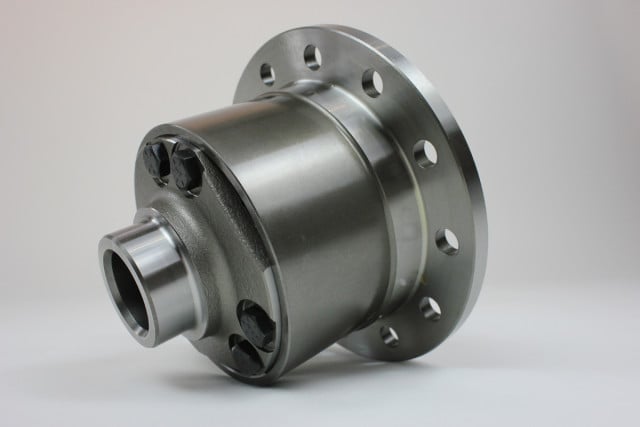 If you’re a drag racer looking for the best traction for the strip, you might want to consider the Detroit Locker as it will handle just about all the power you throw at it. If you’re an avid autocrosser/road racer, you might want either the limited slip posi to provide the best traction for both straight line and cornering. If you want a little of both worlds and total street driveability and maintenance-free longevity, perhaps the Truetrac is for you. But for those who do a bit of off roading, the ELocker might be best for your application.
If you’re a drag racer looking for the best traction for the strip, you might want to consider the Detroit Locker as it will handle just about all the power you throw at it. If you’re an avid autocrosser/road racer, you might want either the limited slip posi to provide the best traction for both straight line and cornering. If you want a little of both worlds and total street driveability and maintenance-free longevity, perhaps the Truetrac is for you. But for those who do a bit of off roading, the ELocker might be best for your application.
It all depends on where your vehicle spends most of its time, but each differential can definitely give you a lot more performance from your vehicle by allowing you to supply all the power to both wheels – instead of just one, like the open differential. Be sure to check out the Eaton website for more information and availability on either of these differentials.



